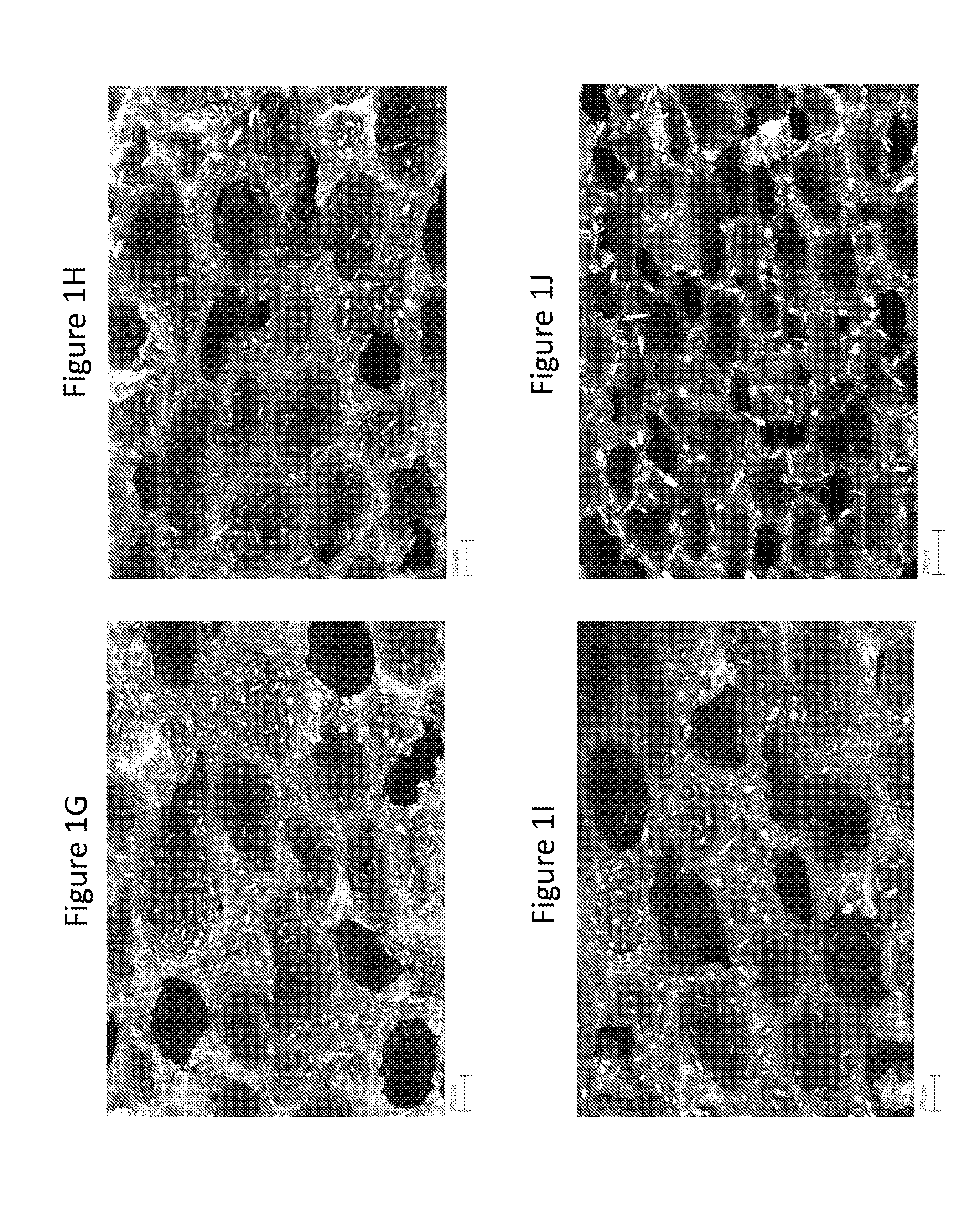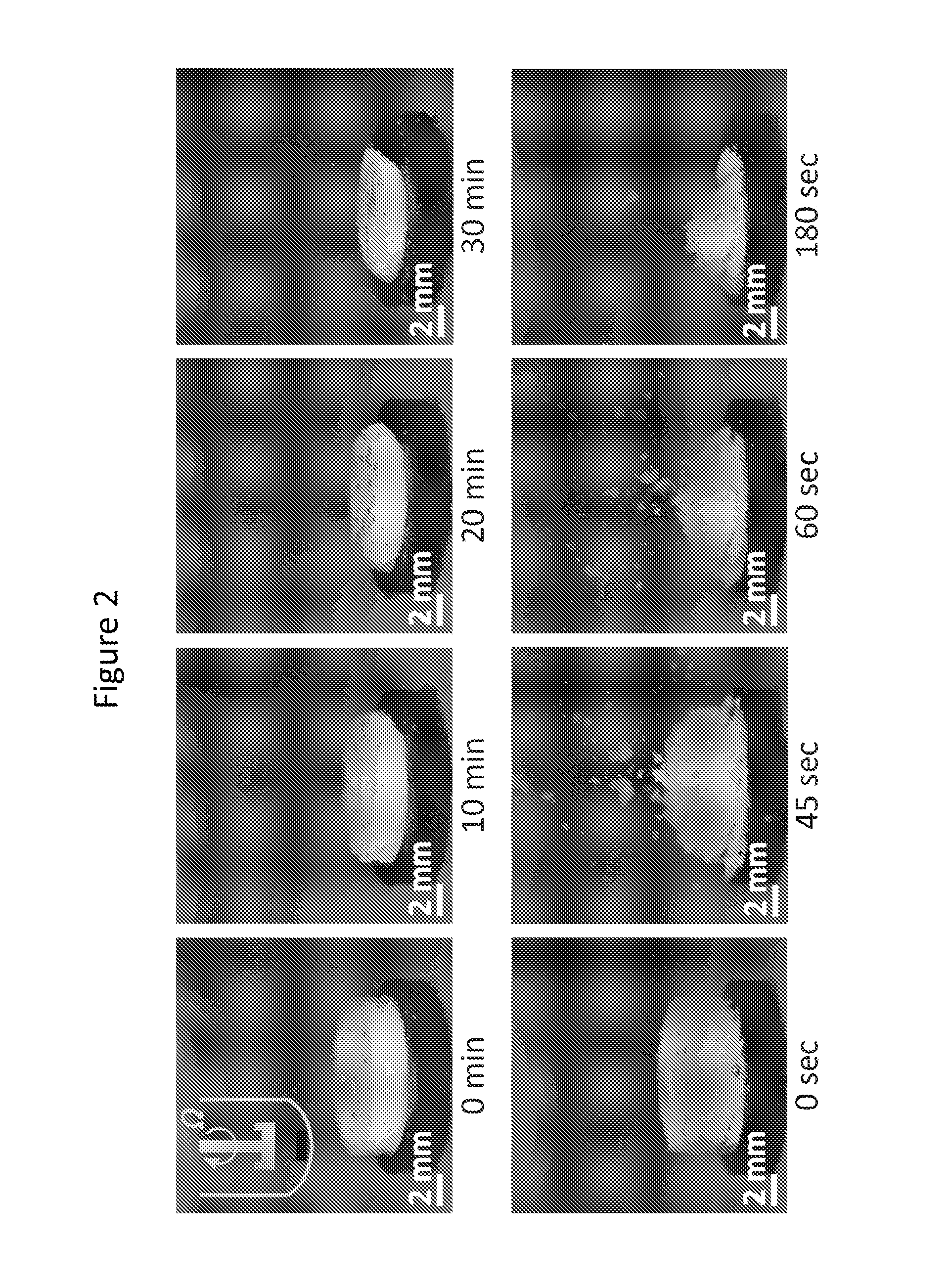Melt-processed polymeric cellular dosage form
a polymer and cellular technology, applied in the field of microstructures, compositions and methods for immediate drug release, can solve the problems of affecting the immediate release of drugs, affecting the dissolution of aggregates, etc., to achieve satisfactory mechanical properties, improve the immediate release properties, and improve the effect of uniformity
- Summary
- Abstract
- Description
- Claims
- Application Information
AI Technical Summary
Benefits of technology
Problems solved by technology
Method used
Image
Examples
experimental examples
Example 1
Preparation of Cellular Dosage Forms
[0156]This example demonstrates an exemplary fabrication of cellular dosage forms. Acetaminophen and polyethylene glycol 8,000 were selected as the active ingredient and the excipient for this example.
Preparation of Cellular Dosage Forms:
[0157]Acetaminophen powder was first sieved using a stainless steel mesh with a nominal opening of 53 μm (size No. 270). The drug particles were then combined with solid polyethylene glycol 8,000 (PEG 8000) flakes to give a formulation of 63% Acetaminophen and 37% PEG 8000 by weight. The mixture was then heated to 90° C. and kneaded until a uniform paste was formed. Subsequently, an aliquot of the paste was put in a stainless steel mold held at 25° C. The aliquot was compressed and cooled to give a cast disk with diameter 13 mm and thickness 2.5 mm. The disk was used as reference of the unfoamed samples. For preparation of the cellular dosage forms, the disk was placed in a sample holder with an inside di...
example 2
Images and Characteristics of Microstructures
[0159]This example demonstrates exemplary characterizations of microstructures in cellular dosage forms using Scanning Electron Microscope images.
Scanning Electron Micrography (SEM):
[0160]A cross sectional surface of the dosage form that shows its microstructure for SEM imaging was obtained by first scoring the sample with a razor blade and then breaking it along the score. A Zeiss Merlin High Resolution SEM with a GEMINI column was used to take the images. Imaging was performed with an in-lens secondary electron detector. An accelerating voltage of 5 kV and a probe current of 95 pA were applied.
Referring to FIG. 1, it shows morphologies of structures may be tailored by adjusting the process conditions. High Ts and ps increased the void volume fraction and the fraction of open cells. τr only minimally affected the void volume fraction, but had a large effect on the diameter of voids and further affected the resulting fraction of open cell...
example 3a
Dissolution of Cellular Dosage Forms
[0167]This example demonstrates exemplary dissolution tests of cellular dosage forms showing that the dosage forms are suitable for immediate drug release.
Dissolution Testing:
[0168]The dosage form was first attached to a ring disk. The sample was then placed at the bottom of a dissolution vessel (within a Sotax dissolution bath) which was filled with 900 ml of 0.05 M phosphate buffer solution (using sodium phosphate monobasic and sodium phosphate dibasic) at pH of 5.8 and the temperature of 37° C. The solution was stirred using a paddle rotating at 50 rpm. The concentration of dissolved drug was measured by UV absorption at 244 nm using a fiber optic probe with a path length of 2 mm (Pion, Inc.).
Determination of the Dissolution Time, t0.8:
[0169]The time to dissolve 80 percent of the drug content was determined from the curves that show the drug amount dissolved versus time.
[0170]Snapshots of dissolving closed-cell and open-cell dosage forms are sh...
PUM
| Property | Measurement | Unit |
|---|---|---|
| Length | aaaaa | aaaaa |
| Length | aaaaa | aaaaa |
| Length | aaaaa | aaaaa |
Abstract
Description
Claims
Application Information
 Login to View More
Login to View More - R&D
- Intellectual Property
- Life Sciences
- Materials
- Tech Scout
- Unparalleled Data Quality
- Higher Quality Content
- 60% Fewer Hallucinations
Browse by: Latest US Patents, China's latest patents, Technical Efficacy Thesaurus, Application Domain, Technology Topic, Popular Technical Reports.
© 2025 PatSnap. All rights reserved.Legal|Privacy policy|Modern Slavery Act Transparency Statement|Sitemap|About US| Contact US: help@patsnap.com



